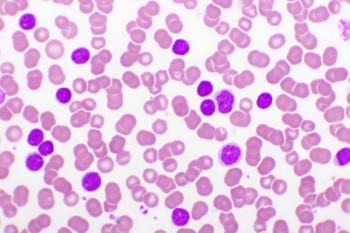
Dr Elaine Siegfried Discusses Skin Color, Socioeconomic Implications of Atopic Dermatitis Management
Elaine Siegfried, MD, professor of pediatrics and dermatology, Saint Louis University Health Sciences Center, explains the impact of socioeconomic status on the management of atopic dermatitis in the clinical setting.
The prevalence of
Transcript
Diversity has been cited as a major issue in dermatology clinical trials. Can you discuss challenges that contribute to these disparities and potential solutions?
That's a great question. The prevalence of AD is proportionally higher in African American children. We don't really know why that is, it may be because their access to medications, their access to specialty care is more limited. Also, family support can play a giant role in that. Having lots of other children or child care issues can play a role because AD is a very labor intensive disease, especially when you're talking about topical therapy. Transportation, there's all kinds of issues that get in the way of taking care of children who are of limited socioeconomic status.
So, in my practice, about 60% of my patients are Medicaid insured, about 50% of children in the global population are [on] Medicaid insurance. So, again, lack of access to different medications with limited insurance formularies and lack of access to subspecialty care, I think play a major role in that health care disparity. We don't know if there's anything intrinsic about African American or Black skin. We know that the barrier function tends to be a little bit better compared with White skin if you're just looking at parameters like transepidermal water loss after tape stripping, but we don't have a really good idea after that.
We also know that African American children are more susceptible to certain kinds of infections like tinea, for example. That's not one that I mentioned with their relative cutaneous energy, but that's one that can be pretty widespread in children who have AD, and occult tinea capitis is almost endemic in the urban African American population.
I was talking to a caregiver the other day about an African American patient of mine, just trying to get a handle on issues related to poor adherence or why this child has such bad disease. And they were taken care of in a clinical setting where they had been attending primary care visits, but they had a different practitioner every time because it was in a clinical setting. But without much even for that particular family in the way of no shows, we do know that poor adherence to attending clinic visits is higher in the population with low socioeconomic status.
So, all of these things make it much harder to take care of children in that patient population. And so it's not necessarily what their Fitzpatrick skin type is or having dark skin, but socioeconomic status plays a giant role.
I think to help that it would be very useful to be able to have access to social workers and case managers to just help people get to their appointments, remember their appointments, and get access to their medications when they can't get access otherwise. It's very time consuming and difficult for parents of children with moderate to severe disease who have lower health literacy and then a lot of other limitations to access to care and access to medications.
Newsletter
Stay ahead of policy, cost, and value—subscribe to AJMC for expert insights at the intersection of clinical care and health economics.









































